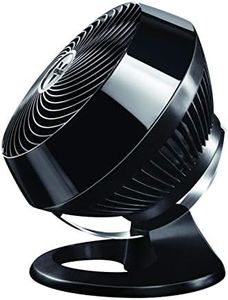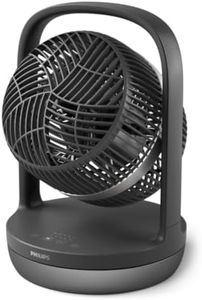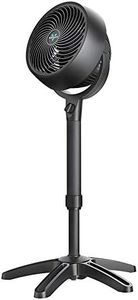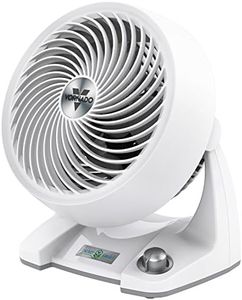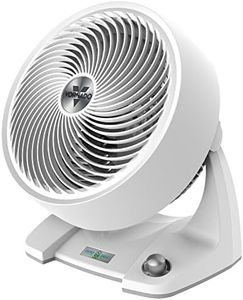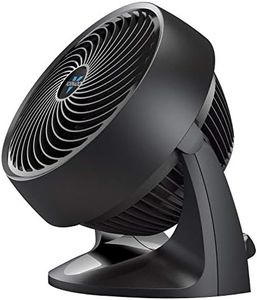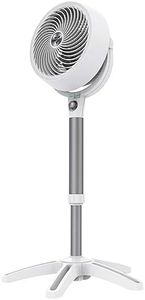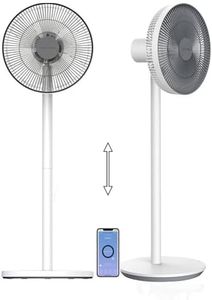We Use CookiesWe use cookies to enhance the security, performance,
functionality and for analytical and promotional activities. By continuing to browse this site you
are agreeing to our privacy policy
10 Best Quietest Fans
From leading brands and best sellers available on the web.Buying Guide for the Best Quietest Fans
When looking to buy a quiet fan, your main goal is to find a fan that effectively moves air while producing the least amount of noise. Quiet fans are great for bedrooms, offices, nurseries, or any space where minimal noise is important. To choose the right quiet fan, you’ll want to consider several important features that affect both the fan’s noise level and its cooling ability. Understanding the key specifications will help you balance the need for quiet operation with sufficient airflow, and select a model that best fits your personal preferences and the environment where it will be used.Noise Level (dB)Noise level, often measured in decibels (dB), tells you how loud the fan will be when operating. This is the most direct way to compare how quiet different fans are. Lower numbers mean quieter operation: whisper-quiet fans typically run at 20-30 dB, normal conversation is about 60 dB, and loud fans can reach above 65 dB. If you are very sensitive to noise or plan to use the fan at night, look for the lowest dB rating possible. For most people, fans rated below 40 dB are suitable for bedrooms, while higher levels might be acceptable for living rooms or kitchens.
Fan Type and Blade DesignThe type of fan (tower, pedestal, table, or bladeless) and the shape or number of its blades influence how much noise it generates. Bladeless designs or fans with innovative blade shapes tend to be quieter, as they cut through the air more smoothly. Traditional bladed fans can vary widely in noise depending on size and speed. If you prioritize quietness, a bladeless fan or a model with specifically designed quiet blades is often a good choice, but always check reviews and noise ratings.
Speed Settings and ControlsFans usually come with multiple speed settings. Running a fan on lower speeds usually makes it much quieter, while higher speeds can make even a quiet fan somewhat louder. Choose a fan with several speed options so you can adjust the airflow and noise level to your preference. If you need silence for sleep or work, even the quietest fan may still be noticeable on high, so having a low and ultra-low setting is useful.
Airflow (CFM)CFM, or Cubic Feet per Minute, measures how much air the fan moves. A fan that moves more air (higher CFM) can cool larger spaces but may do so with more noise. Lower CFM fans are naturally quieter but may not be as powerful for cooling large rooms. Match the CFM to the size of your room and how much airflow you need; if your space is small and quietness is crucial, a lower CFM may be sufficient.
Build Quality and Vibration DampeningBuild quality matters, as well-made fans with solid materials and balanced components are less likely to rattle or vibrate, which are common sources of extra noise. Some fans include rubber feet or mounts to absorb vibration. If quiet operation is a priority, check if the fan is designed with special vibration-reducing features or has a reputation for solid, stable construction—this makes a noticeable difference over time.


